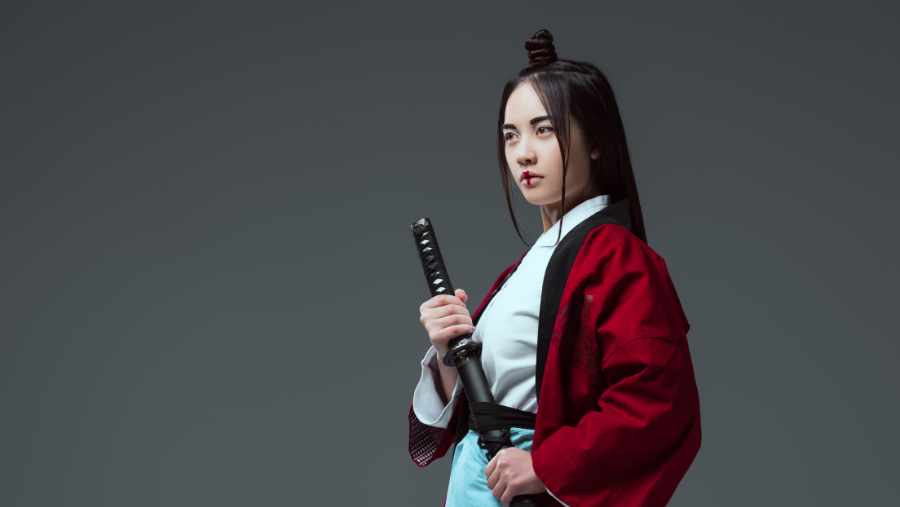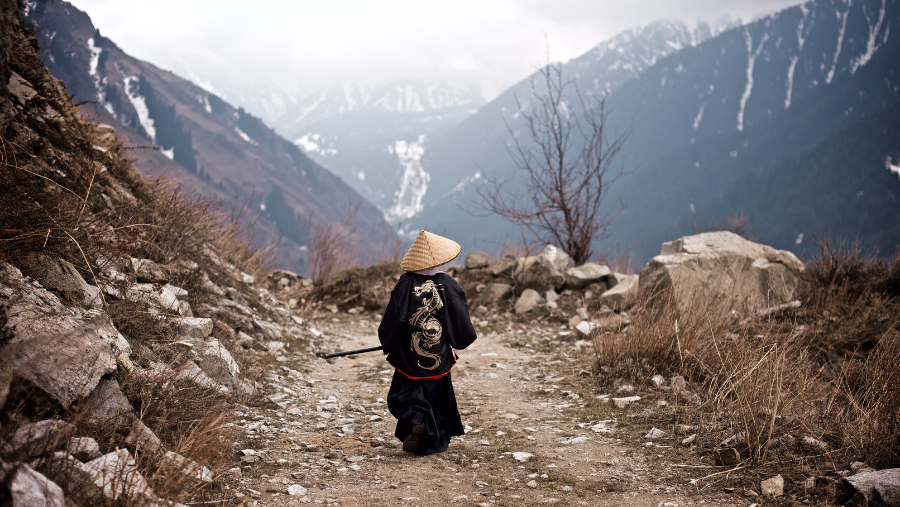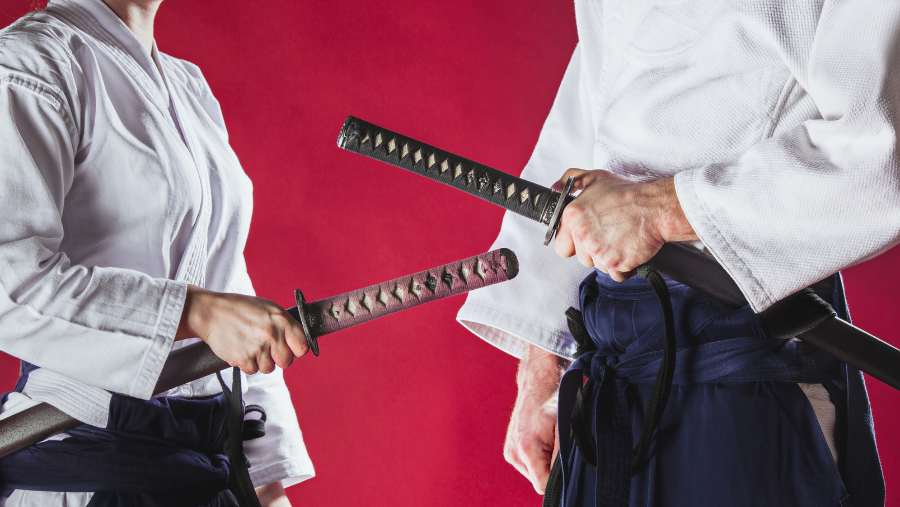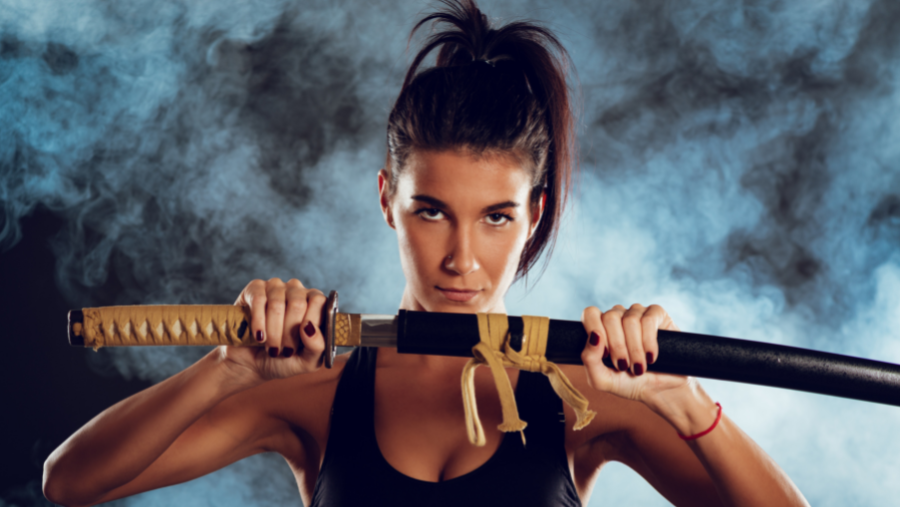The katana, otherwise known as the samurai sword, is one of the most recognizable swords in the world. Though legends and myths surround its making, a true katana has a unique style that sets it apart from other swords. Katanas are a type of ancient Japanese sword, used by the samurai class to defend against invaders. They are famous for their sharp edge, which allows them to cut through anything. These swords have been featured in many movies and TV shows, with varying degrees of historic accuracy.
Suppose you are fans of Japanese culture and art, you must be curious about some secret behind katanas. Let’s take a look at some fascinating facts about katanas below to get to know more about this famous sword. From the unique making process to the trivia facts that show how powerful kanatas are, those facts below will definitely broaden your knowledge. Let’s jump to the list!
Table of Contents
- 1. Samurai Sword is Not Always Katana
- 2. Katanas Makers Purified Himself Before Forging Process
- 3. The First Katana Is Not Curved
- 4. Katanas Weren’t Really Used In World War II
- 5. Katanas Got Banned After World War II
- 6. The Only Japanese Sword with The Cutting Edge Up
- 7. Tsuba, A Valuable Item For Katanas Collectors
- 8. Only Certified Authority Can Own Katanas
- 9. Kanatas’ First Official Tested On Criminals
- 10. Different Type of Blades Determine The Purpose of Katanas
- 11. Traditional and Modern Katanas Have Different Material Composition
- 12. Most Sword Cuts By Katanas
- 13. Katanas Cut 9mm Bullet
- 14. Multiple Times Steel Folding Process To Get Pure Blade
- 15. Katanas Polishers Determine The Sword’s Value
1. Samurai Sword is Not Always Katana

The katana connected to samurai is arguably the most famous. However, it should be emphasized that a katana is not necessarily considered to be a samurai sword. In reality, it is a specific kind of samurai sword. You can think of it like this: Katanas are all samurai swords, even if not all samurai swords are katanas.

Even though it might be the case, most people agree that the sword was nothing more than a crucial weapon in warfare. Additionally, the main weapons used by soldiers on the battlefield were spears and bows. Of course, the katana served a purpose in battle, particularly at close quarters when the aforementioned weapons were ineffective.
2. Katanas Makers Purified Himself Before Forging Process

It took a lot of commitment to make a katana. Swordsmiths were among the highest-paid members of the artisan status group throughout history since they created what was perhaps Japan’s most iconic weapon. It involved considerably more for swordsmiths than simply showing up at a smithy and producing a blade.

Before even starting the forging process, traditional katana forgers cleaned themselves. They achieved this by refraining from sexual activity, observing a fast, and praying beside a waterfall. Throughout the entire process of manufacturing the sword, this kind of reverence was observed.
3. The First Katana Is Not Curved

Do you know that the first kanata has a straight shape? A straight katana that was introduced from China and Korea may have been used by the first Samurai soldiers during the early Heian period. Due to its effectiveness in combat, the Katana’s original straight swords eventually received curves.

The Katana’s blades are curved because they are cutting weapons, enabling them to cut more effectively. The curved blade that we now associate with the katana was added considerably later, when the Samurai realized how useful a weapon like that would be for mounting an assault.
4. Katanas Weren’t Really Used In World War II

Japanese swords were among the most popular “war trophies” from World War II’s Pacific wars, and they are still misrepresented as katanas today. The swords may resemble the samurai’s famous katana swords in look and many attributes. The swords, with the exception of a few “ancestral blades” that had been retrofitted with modern hardware, were unrelated to the samurai class of Japan’s earlier historical periods.

In fact, only high-ranking commanders were awarded these katanas. However, Japanese commanders would never carry these katanas into battle. This is due to the fact that katanas are revered in Japanese culture as a sacred execution weapon. Katanas were only to be used to murder opponents in this manner.
5. Katanas Got Banned After World War II

Since the end of World War II, Japan has placed strong limitations on the ownership and sale of Katana. They’ve basically outlawed the bulk fabrication of swords, leaving only a few certified swordsmiths. Those swordsmiths are also limited in the number of swords they may create per year.

This is because the Warring States period’s mass-produced swords have little to no collectible value. The Sword Abolishment Edict was an edict published by Japan’s Meiji government on March 28, 1876, prohibiting civilians from carrying weapons in public, with the exception of former lords, the military, and law enforcement personnel. It was considered as the personification of a sword hunt.
6. The Only Japanese Sword with The Cutting Edge Up

Making a traditional Japanese katana was a time-consuming and meticulous process. Because it was the only Japanese sword worn with the cutting edge up, the katana is unique. Wearing the katana with the cutting edge up made drawing and unsheathing the sword easier for samurai fighters.

Faster unsheathing and drawing is possible with the cutting edge facing up. With one hand, samurai fighters could seize the katana’s hilt and quickly unsheathe it, giving them an advantage over their opponents.
7. Tsuba, A Valuable Item For Katanas Collectors

The tsuba, or decorative hand guard, is most significant to katana collectors, and it can be just as costly as the blade. Tens of thousands of dollars can be spent on a tsuba. Although the main purpose is to keep the opponent’s blade from slipping on the saber and chopping off the opponent’s hand, it adds artistic value to katanas.

Moreover, different craftsmen also make scabbards, mounts, and ornamentation. At auctions, artistic tsuba components of the sword can fetch a lot of money. As a result, the worth of a sword depends on its completeness. A sword’s value is reduced by 10% if the guard is absent. The value of a sword without a scabbard is reduced by 30%.
8. Only Certified Authority Can Own Katanas

Katanas were only allowed to be carried by samurai. With almost no conflicts to fight, the katana became more complex and less functional, until they were only used to signify social standing rather than serve as swords. Citizens can own katanas that are registered with the Japanese Sword Association if they have historical or cultural importance.

A certificate of authenticity and an ownership permission are required to lawfully own a katana. In the United States, katanas are classified as knives and are governed by state rather than federal legislation. To buy or own a katana, a collector must be over the age of 18 or have their parents’ permission implicitly.
9. Kanatas’ First Official Tested On Criminals

During the Edo era (1603–1868), the government established an official sword-testing bureau to determine the quality of the katana’s blade. A master swordsman would put a blade to the test by slashing through the bodies of executed and possibly live criminals placed on top of each other in tameshigiri. According to legend, a 16th-century kanata blade was reputedly used to sever seven bodies at once.

Blades were tested in a variety of sites, ranging from the ankle to the trunk. If the blade proved to be extremely strong, its value skyrocketed. Older blades were also subjected to tests in order to see whether they might be made more valuable.
10. Different Type of Blades Determine The Purpose of Katanas

In fact, the type of blade used differentiates these broad categories of katana. Shinogi-Zukuri, Shobu-Zukuri, and Kissaki-Moroha-Zukuri are three different varieties of Katana. Each of these blades has a different function.

The most frequent shape is Shinogi-Zukuri, which is recognized for its quickness, clean, and effective cutting ability. Shobu-Zukuri blades are thought to have evolved from naginata/nagamaki blades, which were known for their cutting prowess. Kissaki-Zukuri improves the adaptability and lethality of swords with its sharp point that may be used for piercing assaults,
11. Traditional and Modern Katanas Have Different Material Composition

Katanas are generally made from Tamahagane steel, a traditional Japanese steel. To make katanas, they have to be processed by melting, forging, shaping, and polishing the blade. This is a meticulous and time-consuming process that necessitates a high level of craftsmanship on the part of the craftspeople. Therefore, traditional Tamahagane steel Katanas are in high demand and are often collected as antiques.

Meanwhile, modern katanas are composed of different types of steel alloys, such as high carbon steel, spring steel, and clay tempered steel. The performance of katana blades constructed of contemporary steel is superior. They are more durable and maintain a sharper edge. They are also less expensive.
12. Most Sword Cuts By Katanas

Isao Machii, a Japanese martial arts master, set a new world record for the most martial arts sword cuts in one minute in 2017. Machii successfully swung his katana as he chopped through the straw shafts 87 times while standing prepared in a park in Toyonaka, Osaka.

The cuts must be made into rush straw shafts that are at least 2.95 feet long and separated into four 5.9 inches parts, according to the requirements. It counts as one cut as long as the sword slices through the 5.9 inches pieces. He hopes that by continuing to set world records, he will be remembered as a master swordsman around the world.
13. Katanas Cut 9mm Bullet

In case you wonder, when katanas meet bullets fired, which one will win? Well, the powerful katanas can cut the 9mm bullet in two without dents, scratches, or nicks on the blade. This record has been set by Isao Machii as the fastest BB pellet cut by sword. Isao Machii sliced the fastest BB pellet by sword at 98.36 mph on June 4, 2013 in Chiyoda, Tokyo, Japan.

When trying to set this record, an air gun was used to fire the BB pellet. Isao Machii began the attempt by putting his sword blade in its scabbard and drawing the sword just as the BB pellet approached him.
14. Multiple Times Steel Folding Process To Get Pure Blade

Folding swords is an element of the traditional Japanese katana forging process. Shita-kitae, or folding sword steel, can happen between 10 and 20 times. Some of the purest blades are folded so many times that they have up to a million layers of steel.

The inherent imperfections in the metal are the main reason why Japanese sword manufacturers fold the metal. This produces the soft metal that will be used as the blade’s core. However, folding pure, homogenized, high-quality steel isn’t necessary, and it can actually make it weaker.
15. Katanas Polishers Determine The Sword’s Value

Beside the respected swordsmiths for katana making, there are also great polishers that contribute to katana’s value. To create a brilliantly realized work of art, both are required. When the swordsmith is finished with the rough blade, he or she gives it to a togishi, a polisher whose job it is to refine the shape of a blade and improve its aesthetic value.

The key features are hidden until a polisher goes to work bringing out the craftsmanship’s perfection. Polishing is necessary because it brings out the grain and temper line of the steel, both of which are important to a sword’s aesthetic and overall worth. It’s also notably crucial for the blade’s edge longevity and surface friction.



